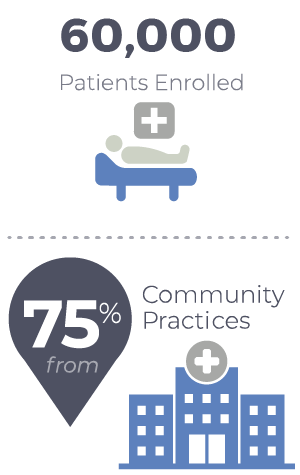Function and Outcomes Research for Comparative Effectiveness in Total Joint Replacement is a federally funded national research program.

FORCE TJR was originally supported by grant P50HS018910 from the Agency for Healthcare Research and Quality (AHRQ) to the UMass Chan Medical School Department of Orthopedics and Physical Rehabilitation. The original registry*, which includes the total joint replacement data from the grant cohort, developed into a much larger consortium of surgical practices and patients. The FORCE-TJR consortium enrolled more than 60,000 US total joint replacement (TJR) patients from diverse socioeconomic, racial-ethnic and geographic backgrounds, 75% of them from community practices, forming a nationally representative cohort of TJR patients that support the establishment of national norms (clinical benchmarks) and risk-adjustment models for TJR.
*Registry: A place to store detailed information about people with a specific disease or condition, who provide it on a voluntary basis. (NIH definition)
Patient-centered registries such as FORCE-TJR offer efficient, effective infrastructure for real world evidence generation to guide clinical practice and device assessment. FORCE-TJR merges data obtained from patients with administrative and clinical data to serve clinical and policy evaluations of devices, surgical practice, and timing and use of orthopedic interventions.


We encourage ancillary research proposals to assure optimal use of data and tools. Surgeons and scientists are invited to propose new and ancillary analyses of the registry data and biorepository materials to promote academic-private partnerships to expand the research scope.
*Ancillary research: An independent research project that uses samples or data from a parent study to extend knowledge in scientific areas beyond the original scope of the parent study (NIH definition)